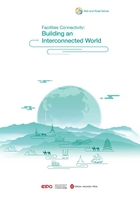
II. Facilities Connectivity Rapidly Improves Under the Belt and Road Initiative
Since Chinese President Xi Jinping proposed the Belt and Road Initiative in October 2013, countries along the routes have responded warmly, as have Chinese enterprises. Breakthroughs have been made in the field of infrastructure connectivity. According to incomplete statistics, China signed a total of 15 project agreements with countries along the Belt and Road prior to 2013, with a total investment of around US$18 billion. Five agreements of this kind were endorsed in 2015, with a total investment of around US$5.5 billion. The figure rose to eight in 2014, with a total investment of around US$26 billion. The year 2015 saw explosive growth in infrastructure cooperation, with formal agreements signed to build 19 new projects, with a total investment of over US$50 billion. Thus, we can see that the number of economic cooperation projects between China and countries along the routes and the corresponding investment have increased rapidly since 2013, and peaked in 2015. This also reflects the active response to the Initiative of countries and international organizations along the routes, signifying broad prospects for its further implementation.
Actively performing its international duty, China provides new financing channels for global infrastructure construction and promotes financial innovation in global infrastructure investment. The focus of the National Development Bank and the Export-Import Bank of China, established in 1995, is on providing long-term preferential development financing for infrastructure projects which qualify for economic and social benefits in China and other developing countries. After 20 years of development, these two policy-based development financial institutions of China have become the most competitive and influential throughout the world. Under China’s proposal, the Asian Infrastructure Investment Bank and New Development Bank, the two financial institutions specializing in multilateral development, provide financing services for infrastructure projects in Asia and BRICS, so benefiting billions of people.
By region, South Asia and Africa are the most important areas for China to promote infrastructure projects under the Belt and Road Initiative. According to statistics from the project team of the Chongyang Institute for Financial Studies, Renmin University of China, by December 31, 2016, China had signed 15 infrastructure project agreements with South Asian countries totally valued at US$30.65 billion; and 12 such agreements with African countries totally valued at US$30.82 billion. China’s “investment-construction-operation” infrastructure business is also welcomed by relevant countries in North Asia, Southeast Asia, and Eastern Europe. In the same period, China signed four project agreements with North Asian countries totally valued at US$16.31 billion, five infrastructure project agreements with Southeast Asian countries valued at US$9.73 billion, and five with Eastern European countries valued at US$14.39 billion.

Projects under the Belt and Road Initiative

Projects under the Belt and Road Initiative by Region